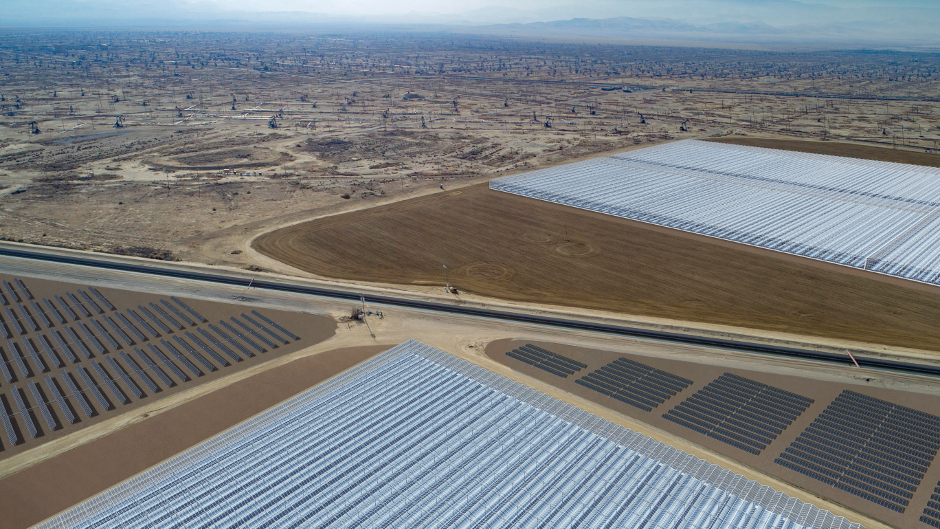
GlassPoint Solar will supply Aera Energy, one of California’s largest oil and gas producers, with an integrated solar plant that will be the first of its kind to use solar steam and solar electricity to power oilfield operations. It is claimed that the finished Belridge Solar project will deliver the largest peak energy output of any solar plant in California.
“Our partnership with Aera demonstrates the growing energy convergence where renewables and traditional energy leaders are working together to address some of the biggest challenges of our time,” said Sanjeev Kumar, GlassPoint SVP, Americas.
GlassPoint’s solar technology will be used for the extraction of heavy oil, which accounts for half of California’s crude oil production. Heavy oil is produced by injecting steam into the reservoir to heat the oil so it can be pumped to the surface. This process - thermal Enhanced Oil Recovery (EOR) - typically generates steam using natural gas.
According to GlassPoint’s website, the company’s enclosed trough technology houses curved mirrors inside a greenhouse that track the sun throughout the day, focusing heat on pipes containing oilfield water. The concentrated sunlight boils the water to generate steam, which is then injected into the oil reservoir. To maintain steam injection 24/7, solar steam is injected during the day, and steam produced by burning natural gas is injected at night.
Belridge Solar will consist of an 850MWt solar thermal facility, producing 12 million barrels of steam per year, and a 26.5MWe photovoltaic facility to generate electricity. The solar-generated steam and electricity will reduce natural gas currently used onsite in oilfield operations.
Aera and GlassPoint plan to break ground on the Belridge Solar plant in the first half of 2019. The project is expected to start producing steam and electricity as early as 2020.
In 2011, GlassPoint unveiled its first commercial project with Berry Petroleum in Kern County, California. Following the success of the pilot project, GlassPoint scaled its technology overseas in Oman and is currently constructing Miraah, a project with Petroleum Development Oman (PDO). Once complete, Miraah will produce over one gigawatt of peak thermal energy, making it one of the world’s largest solar plants.
CLICK HERE FOR MORE ENGINEERING NEWS






Nanogenerator consumes CO2 to generate electricity
Nice to see my my views being backed up by no less a figure than Sabine Hossenfelder https://youtu.be/QoJzs4fA4fo